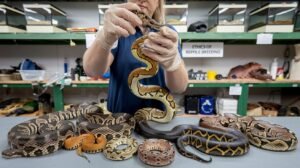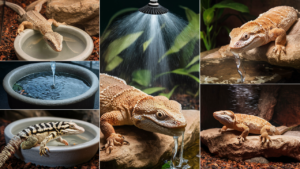Bird incubation is a critical phase in avian reproduction, requiring careful attention to numerous factors. From proper temperature regulation to effective egg candling techniques, this article explores essential practices that can significantly impact hatching success. Whether you’re a novice or an experienced breeder, understanding these principles will enhance your incubation endeavors.
Understanding Bird Incubation Care
Bird incubation care requires meticulous supervision and environmental monitoring to optimize conditions for embryo development. Proper temperature control and humidity management are essential to mimic natural brooding, thus facilitating successful hatching. Regular monitoring of temperature ensures that fluctuations are minimal, while maintaining adequate humidity prevents desiccation of eggs. Extra care involves maintaining cleanliness in the incubation space to protect embryos from pathogens. Implementing these steps creates a nurturing environment conducive to growth, enhancing overall hatching success rates for bird enthusiasts.
Egg Candling Techniques for Monitoring Development
Candling is a crucial technique employed to monitor embryo development during the incubation process. By using a bright light source, one can illuminate the egg and observe internal changes. Regular candling, typically performed around days 7, 14, and 18 of incubation, allows for the identification of viable embryos and those that may not develop properly. Signs to look for include the presence of blood vessels, the expanding shadow of the embryo, and movement. Recognizing these indicators enables timely interventions, reducing the risk of hatching failures. Understanding correct candling techniques enhances overall hatching success.
Controlling Incubation Temperature for Optimal Results
Maintaining the correct temperature during incubation is crucial. Optimal ranges typically fall between 37.5°C to 38.5°C for many species. Utilize quality thermostats and incubators, ensuring accurate readings. Regularly monitor temperatures and employ calibrated thermometers for reliability. Temperature spikes can lead to malformations; conversely, drops can hinder growth. Adjust settings gradually to accommodate specific species, as even minor fluctuations can affect embryo health and viability. Implementing these practices can significantly enhance hatching outcomes, making attention to temperature a top priority for successful incubation.
Essential Tips for Hatching Success
Successful hatching depends on timing and close monitoring of the incubation process. Understanding when to turn eggs and recognizing the optimal days for candling can significantly improve outcomes.
Egg candling should be performed around the fifth or seventh day to check for fertility signs, such as vascular development and embryo progression. Frequent observation helps detect anomalies.
Embryo distress can manifest in several ways, such as delayed development or abnormal coloration. Recognizing these signs early enables prompt adjustments to environmental conditions to enhance hatching potential.
Maintaining a consistent incubation temperature and humidity level assists in stabilizing embryo health. Calibration of equipment and routine checks are crucial to ensuring an optimal environment for developing eggs.
Beyond temperature and humidity, factors like air circulation and turning frequency also play a role in successful hatching. Incorporating these elements into care routines supports robust embryonic development.
Final phases of incubation require diligent observation. With eggs nearing hatch, signs like increased movement or pipping indicate readiness. Adequate preparation and timely interventions lead to successful hatching.
Conclusions
In conclusion, mastering bird incubation requires a comprehensive understanding of care techniques, candling methods, temperature control, and proactive hatching strategies. By following these principles, breeders can significantly improve their hatching success rates, ensuring healthy chicks and a fulfilling breeding experience. Embracing these practices will empower anyone passionate about avian life to excel in their endeavors.



